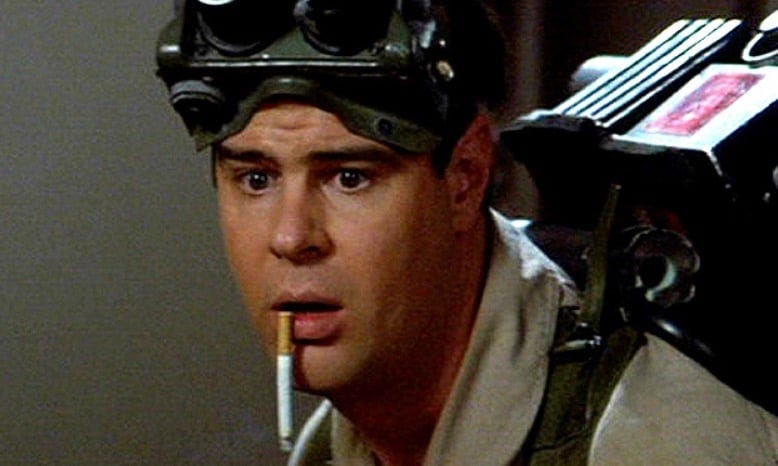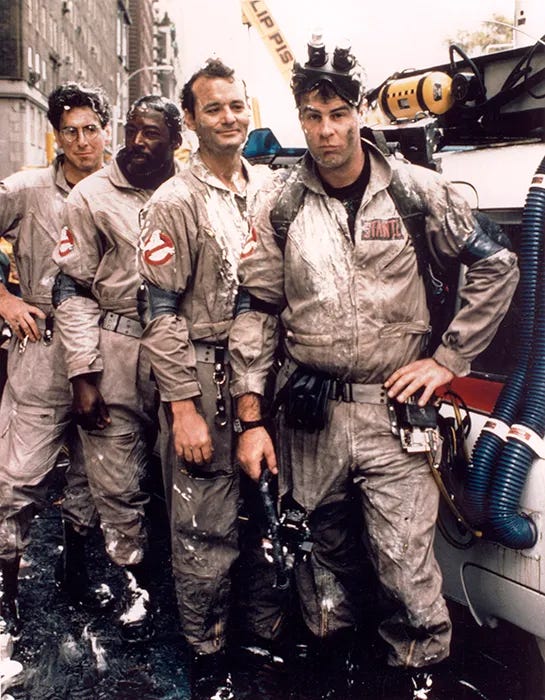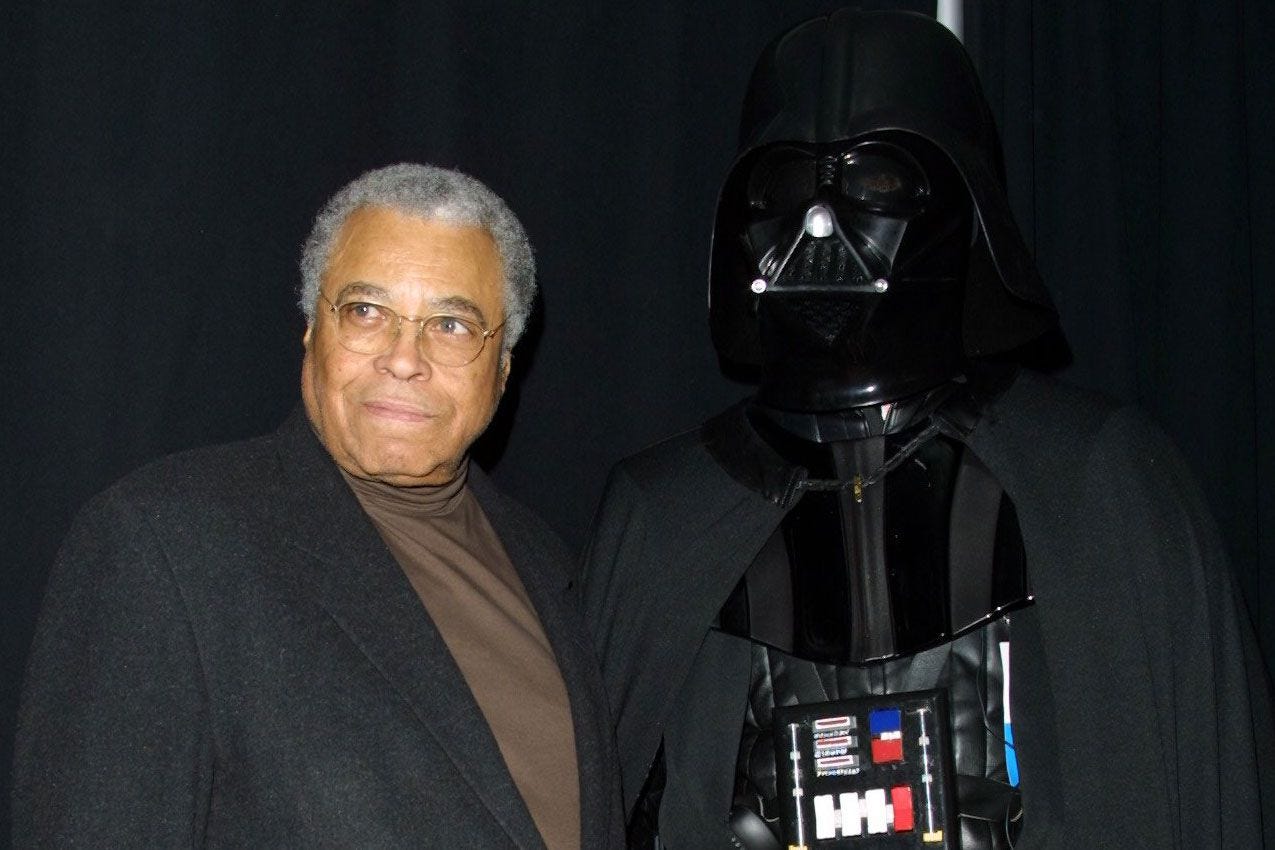Ghostbusters Star Dan Aykroyd is Cool with Being an AI ‘Ghost’ After He Dies
Dan Aykroyd’s recent remarks on AI recreating performers posthumously have reignited Hollywood discussions about digital likeness rights, estate compensation, and ethical concerns in reviving figures like James Earl Jones.
Here’s the TL;DR...
Dan Aykroyd supports AI versions of himself continuing TV work after death, contingent on estate payments, and advocates the same for stars like Robin Williams and Michael Jackson.
His comments highlight demands for regulatory protections as AI advances in entertainment, balancing innovation with equitable financial terms for digital recreations.
Studios view AI as a cost-effective tool, while actors fear exploitation, a tension addressed by SAG-AFTRA’s 2023 strike provisions on AI safeguards.
James Earl Jones’ Darth Vader voice agreement demonstrates consented AI use but exposed negotiation disputes with unions.
Precedents like the James Dean CGI controversy and Tupac hologram have propelled legislation requiring consent for posthumous digital depictions.
AI influences production efficiencies, labor contracts, and debates over content quality, raising alarms about diminished human creativity.
What Did Dan Aykroyd Say About AI Recreating Him After Death?
Dan Aykroyd addressed the topic during a Canadian Press interview from his Ontario farm. He expressed comfort with an AI-generated version hosting his History Channel series The UnBelievable with Dan Aykroyd after his passing.
“Certainly, if History Channel and AI want to generate me after I’m gone and have me out there doing the show, they can. But they have to pay my estate,” he specified.
This stance ties into Aykroyd’s longstanding fascination with the supernatural, from Ghostbusters to paranormal pursuits. He sees a “digital doppelgänger” as a natural tech extension in entertainment, backed by royalties for sustained value. Against widespread industry pushback on AI, his view stands out as pragmatic, perhaps informed by a career chasing ghosts that always demand their due.
How Does Aykroyd Advocate for Compensation in AI Recreations of Deceased Stars?
Aykroyd maintains that estates deserve royalties for any AI revival of late performers, drawing parallels to established music licensing. He pointed to Robin Williams and Michael Jackson, advising their representatives to press studios and tech firms for deals.
“The legal representatives of these individuals are going to have to go to the carriers and say there has to be some kind of rights compensation,” he stated.
In his eyes, AI serves legacy preservation only if finances align equitably. This push signals broader needs to update copyright laws for the digital landscape. With voice and likeness scans becoming routine, perpetual compensation emerges as a core demand.
What Divide Exists in Hollywood Over AI and Digital Likenesses?
Studios champion AI for cutting costs on visual effects, de-aging, and recreations, hailing it as a workflow booster. Actors and unions counter with worries about job losses and consent breaches, especially for those unable to object after death. SAG-AFTRA’s post-strike rules now mandate approvals and payments for digital scans, easing some fears.
Aykroyd charts a centrist path by backing the tech alongside payment requirements, informed by his decades in the industry. Younger talent frets over AI doubles that could siphon residuals indefinitely. The rift pits operational efficiencies against safeguards for creative integrity, with deepfakes adding enforcement hurdles.
How Has the ‘AI Effect’ Reshaped Film and TV Production Expectations?
AI drives up standards for polished, affordable content, much like the seamless VFX in blockbuster hits. Tools that generate scripts, visuals, and audio force conventional teams to match machine-like pace and output. Workforce fatigue follows, alongside criticism of results that often feel emotionally flat.
Aykroyd’s idea of AI-led shows captures studios’ hunger for nonstop production. They’re testing generative platforms like Sora for early visuals, which trims certain jobs. Unions respond through contracts that insist on human involvement, aiming to retain the spark machines can’t replicate.
How Does James Earl Jones’ AI Voice Deal Serve as an Example in the AI Debate?
James Earl Jones granted Lucasfilm rights in 2022 to use Respeecher AI for recreating his Darth Vader voice in Obi-Wan Kenobi, bypassing new recordings after his 2024 death. The deal included compensation, echoing Aykroyd’s focus on estate benefits.
SAG-AFTRA filed a 2025 complaint against Epic Games for using an AI Vader in Fortnite, arguing lack of union consultation despite estate sign-off. This exposes tensions between personal agreements and labor standards. Jones’ case affirms AI’s role in extending legacies, yet it reveals risks of overreach without coordinated oversight, where even consented tech treads ethical gray zones.
His modest $7,000 fee for A New Hope highlights how far performer pay structures have shifted in the AI age.
Why Do Accusations of Exploiting Deceased Stars with AI Persist in Hollywood?
Proposals like the 2019 CGI casting of James Dean in a Vietnam War film faced sharp backlash for ignoring family input. Tupac Shakur’s 2012 Coachella hologram captivated crowds but sparked estate lawsuits over rights and earnings. Deepfake ads featuring Audrey Hepburn prompted swift legal challenges from her foundation.
Such cases reveal gaps in protections for the deceased, reducing likenesses to marketable property. Aykroyd’s royalty demands aim to bolster these defenses via stronger IP rules. California and similar states now require estate consent for digital replicas.
How Did the 2023 SAG-AFTRA Strike Tackle AI Fears?
The 118-day strike prioritized AI limits amid battles over residuals. Performers won requirements for consent, fees, and labeling of synthetic content in contracts. Indefinite use of scans now demands fresh approvals or payments.
Fears of AI replacements, from principals to extras, shaped these gains, with coverage extending to supporting roles. The pact models solutions for global unions, emphasizing tech accountability.
What Past AI Scandals Involving Dead Celebrities Fueled Regulation Calls?
James Dean’s unauthorized CGI in Finding Jack ignited 2019 outrage over icon disrespect. Dr. Dre’s Tupac hologram moved forward without complete estate buy-in, leading to IP fights and moral debates. Carrie Fisher’s de-aging in Rogue One questioned consent after her passing.
These events spurred New York and California laws extending publicity rights posthumously. Aykroyd’s views align with federal reform efforts. They show AI outpacing regulations at every turn.
How Do State Laws Address Posthumous AI Use of Likenesses?
California’s AB 1836 prolongs publicity rights for dead performers up to 70 years, mandating estate approval for AI in ads or films. New York’s 2020 measure fines digital fakes. Both aim at deepfakes and holograms, leaving some non-commercial uses unregulated.
Aykroyd reinforces calls for national uniformity. Global tech firms complicate consistent application and enforcement.
What Role Does AI Play in Recent Hollywood Layoffs and Shifts?
Studios shed thousands of positions in 2023 and 2024, blaming streaming woes while leaning on AI for savings. VFX leaders like DNEG struggled against automation’s rise. Many performers shift to indies to sidestep AI-heavy majors.
Aykroyd’s forward stance clashes with anxieties over AI handling scripts and edits. Unions flag market floods of subpar, machine-made fare. Creators increasingly build independent paths.
Why Are Actors Turning to Indie Projects Amid AI Concerns?
Indie work offers contract control to bar AI intrusions. YouTube and similar platforms prioritize human-driven stories over automated ones. Aykroyd’s enduring success motivates, though endless digital clones discourage big-studio ties.
The trend breathes new life into mid-tier films, favoring genuine expression over tech polish. It resists uniform, soulless trends and sparks creativity beyond corporate gates.
Aykroyd’s qualified embrace of AI, innovation tied to compensation, marks a pivotal shift for Hollywood. Technology could eternalize talents, but it demands ironclad ethics and economics to avoid exploitation. As laws evolve, the focus stays on preserving human essence in an increasingly digital industry, ensuring legacies enrich rather than erode.
Hat Tips
Ghostbusters News: “Dan Aykroyd calls for compensation when AI recreates late performers” – Oct 16, 2025
Canadian Press: Original interview source via Ghostbusters News
SAG-AFTRA: “2023 Strike AI Provisions” – Nov 2023
Variety: “James Dean CGI Controversy” – Sep 17, 2019
Hollywood Reporter: “Tupac Hologram Lawsuit” – 2012–2014
California AB 1836: “Digital Replica Protections” – 2024
Deadline: “SAG-AFTRA AI Contract Details” – Nov 9, 2023
Forbes: “James Earl Jones Signed Over Rights for AI to Recreate Darth Vader’s Voice” – Sep 9, 2024
Fortune: “James Earl Jones made just $7,000 for his Darth Vader role” – Sep 10, 2024
LA Times: “SAG-AFTRA files unfair labor charge against use of Darth Vader’s voice” – May 19, 2025
Johns Hopkins Carey: “Darth Vader’s voice: Navigating the legal frontier of AI in Hollywood” – Sep 16, 2024
Article Compiled and Edited by Derek Gibbs on October 17, 2025 for Clownfish TV D/REZZED.




